

Basketball in the Philippines – The Countrys Favourite Sport
By: Author James
Posted on Published: August 9, 2019 - Last updated: March 10, 2024
Basketball in the Philippines was introduced by American teachers when the Philippines became a a colony of the United States following the Spanish-American War.
Through this article we look at the history of basketball within the Philippines and who were the main influencers of basketball within the Philippines.
History of Basketball in the Philippines
The Philippines were originally a Spanish colony however, following the Spanish-American War the Philippines were transferred to the Untied States . Although the Philippines became an independent country in 1946, the five decades of United States rule brought significant changes to the Philippines including the introduction of basketball.
Teachers who had traveled from America to the Philippines introduced basketball to the school system and the game of basketball began to spread across the nation.
Philippines Basketball in the Far Eastern Games
The Philippines basketball team took part in the Far Eastern Games which ran from 1913-1934. The Philippines were dominant in the games winning 9 Golds out of ten games. With 1921 being the only year when the Philippines Basketball team did not win the gold medal.
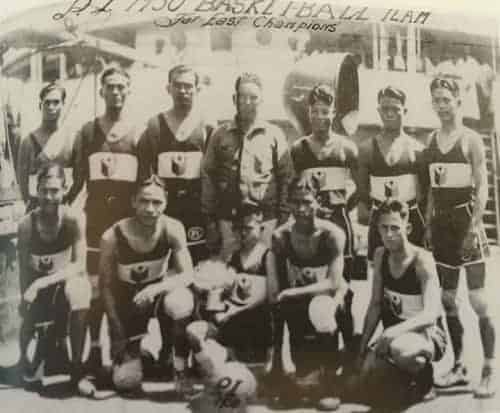
Philippine Basketball in the Olympic Games
In 1936 basketball was listed as an Olympic sport for the first time. The Philippines entered a men’s basketball team for the games and finished fifth in the games following a 4-1 record. Their only loss coming against the United States of in the quarter finals of the competition. The Philippines beat the following teams on the way to the fifth position .
The Berlin Olympics were the most successful Olympics for the Philippines. However, the Philippines continued to be represented in the Olympics and finished in the following places in the following Olympics:
1956 Olympics – Finished in 7th place;
1964 Olympics – Finished in 11th place;
1968 Olympics – Finished in 13th place;
1972 Olympics – Finished in 13th place;
Philippines Basketball at the Asian Games
In 1951 the first Asian games were held, and the Philippines entered a basketball team and ended up winning the gold medal. The Philippines basketball team retained the Gold medal at the 1954 Asian Games. After the disappointment of the 1956 Olympic Games the Philippines bounced back in 1958 with another Asian Games Basketball medal. The Philippines won a gold medal again in 1962.
Philippines Basketball in the FIBA World Championship
The Philippines entered a basketball team into the FIBA World Championship which was held in Brazil in 1954. The Philippines obtained a bronze medal in the championship after finishing of a record of 6-3. To this dates the 1954 Philippine Basketball Team achieved the best finish by an Asian country in the FIBA World Championship tournament.
In 1962 the Philippines were going to host the FIBA World Championship. However, the Philippines refused basketball players from communist nations to be granted visas. Due to this the FIBA organisation suspended the Philippines from FIBA and moved the competition to previous hosts Brazil in 1963.

The Philippines went back to the FIBA Championship in 1974 and finished 13th. In 1978 the Philippines got to host the FIBA Championship. The Philippines kept attending the FIBA Championship and in 1985 the Philippines won the Bronze medal at the FIBA Championship in Spain.
Philippines in the FIBA Asia Championship
The Philippines won the first FIBA Asian Championship in 1961 and has continued success within this Championship. The Philippines won the Championship in 1963, 1967, 1973, 1984, 1996,1997.
Philippines Basketball in the South East Asia Games
The Philippines won the first ever South East Asia Games in basketball and won a second title shortly after. Gold medals followed in 1981, 1983, 1984, 1993, 1995, 1997, 1998, 1999, 2001, 2002, 2007.

Philippine Suspension from FIBA
Although the Philippines enjoyed success on the basketball court there were issues off of the court. Most notably in 2005 when the Philippines were suspended. The reason for the suspension was due to the Philippine Olympic Committee who believed that the Philippines should be the number one team in Asia and there was not enough development of the national Philippine basketball team. Therefore, the Philippine Olympic Committee suspended the FIBA recognised basketball association in the Philippines and in return the Philippines national team was suspended from taking part in the following events, FIBA World Championship, FIBA Asia Championship, the Olympic Games and the Asian Games.
The impact of the Philippines being suspended was felt throughout Asia and the 2005 South Asian Games did not have basketball as an event due to the Philippine team being suspended.
The suspension was finally lifted in 2007 following the creation of a basketball association which FIBA approved of.
Has a Filipino ever played in the NBA?
Raymond Townsend was the first Filipino to play in the NBA . Townsend was drafted by the Golden State Warriors in the 1978 NBA Draft. Townsend had previously played college ball at UCLA. Townsend finished his career with the Indian Pacers (my beloved team).
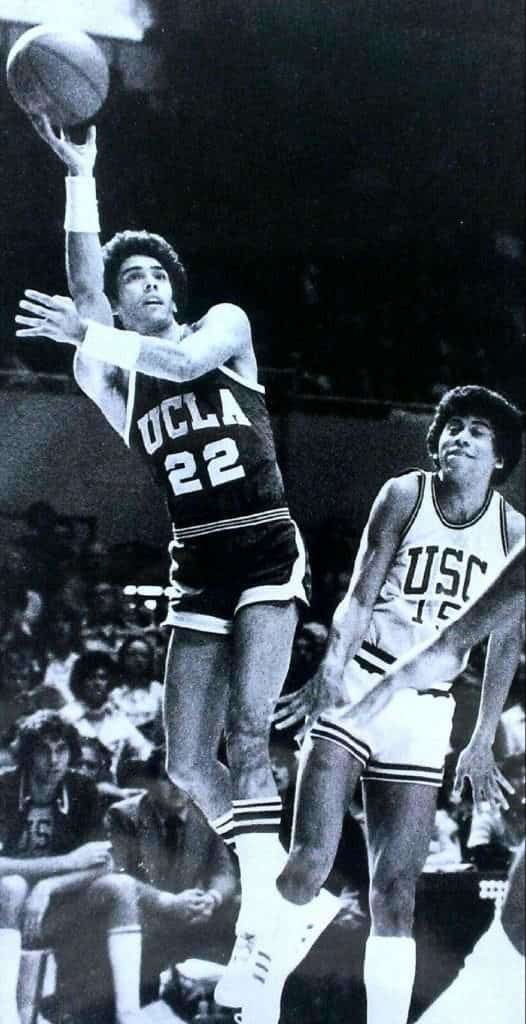
Jordan Clarkson is the second Filipino American to play in the NBA. Clarkson was picked at the 46th pick of the 2014 NBA Draft . by the Washington Wizards and was traded straight away to the La Lakers. Although Clarkson had a successful spell with the Lakers he was traded to the Cleveland Cavaliers in 2018.
Clarkson plays for the Philippine national team as he has held a Philippine passport since he was twelve years old.
NBA All Stars v Philippine All Stars
It is a little known fact outside of the Philippines that an NBA All Stars team goes to the Philippines to play games occasionally against the Philippine All Stars. These are no walkovers, in 1996 Dennis Rodman turned up to the game and the NBA stars were beaten comfortably.
In 2011, the stars that went to play the Philippine All Stars were players such James Harden, Kevin Durant, Chris Paul etc. These games are taken seriously.
- Share full article

‘This Is My Life!’ Why the Philippines Is a Hoops Haven.
Basketball has been in the Philippines since the sport’s earliest days. And it’s everywhere you go, from the churches to the jails to the slums.
Fifteen-year-old Stevan Dig was born in the Tenement housing complex and plays basketball every day there. Credit... Chang W. Lee/The New York Times
Supported by
Photographs and Video by Chang W. Lee
By Sopan Deb
- June 5, 2019
Go to any street corner in the Philippines. Any village. Any beach. Even a church. You’re likely to see a basketball jersey.
“It’s often described as a religion,” Carlo Roy Singson, the managing director of N.B.A. Philippines, said in an interview.
Indeed, basketball is ingrained in Filipino culture and has been for more than a century.
The sport’s permeation of a country of about 105 million began in the late 1800s, when Spain ceded the Philippines to the United States in 1898 after the Spanish-American War. A large facet of the introduction of the fledgling game was Christian missionaries, who were part of the Y.M.C.A. The game’s inventor, James Naismith, conceived of the sport at what was then known as the International Y.M.C.A. Training School in Springfield, Mass. To take a round object and throw it into a peach hoop, as Naismith pictured it, could build morale and character. Soon after he invented the game, missionaries began spreading it around the world, particularly in the Far East and the Philippines, in United States-controlled areas — a kind of sports imperialism.
The N.B.A. and its players, recognizing the sport’s popularity in the Philippines, have invested time there in recent years. In 2013, the Houston Rockets and the Indiana Pacers played a preseason game there. According to a spokesman for the league, the N.B.A.’s Facebook page has 7.3 million followers from the Philippines, the largest of any country outside the United States. Stephen Curry has visited the country multiple times . His teammate Klay Thompson taped a video message in 2015 for his Filipino fans . Multiple networks, including Fox Sports and Solar, broadcast 30 live games per week during the regular season. Two of the most notable figures of Filipino descent in the N.B.A. are Jordan Clarkson, the Cleveland Cavaliers guard, and Erik Spoelstra, the coach of the Miami Heat.
This all began in the early 1900s, when basketball was introduced into schools in the Philippines. In 1913, the first Far Eastern Championship Games — an early version of what is now known as the Asian Games — took place in Manila, featuring several East Asian countries taking part in Olympics-style competitions, including basketball. It was the first of 10 biennial events, before disagreements between the countries disbanded the games. The Philippines won gold in nine of them.
The country’s population took to basketball en masse. In 1936, its national team made the Olympics and placed fifth, finishing 4-1 in the tournament . At the 1954 FIBA world championship, the Philippines won a bronze medal, the best finish for an Asian country . Two decades later, in 1975, the Philippine Basketball Association, Asia’s first basketball league, was created. These games kept the sport at the forefront of Filipino culture and helped grow interest throughout the 20th century.

Chang W. Lee, a New York Times photographer, traveled to the Philippines in April to document how far the sport has come there.
“This is my life! This is my life!” proclaimed a basketball fan, Teddy Garces, after his team, Rain or Shine Elasto Painters, won Game 6 to tie the 2019 Philippine Basketball Association Cup semifinal series with the Magnolia Hotshots Pambansang Manok on a Friday night in April. Garces, a fan of the game for 30 years, spent most of the evening in motion, sitting in his courtside seat one minute, then hopping up on the advertising panels every time a Rain or Shine player scored.
Across the court, Ehla DeJesus, 17, and her sister Rochellyn, 9, moved as if to counterbalance Garces. The sisters jumped up dancing each time the Magnolia Hotshots got a basket. The energy of Garces, the DeJesus sisters and others rocked the Ynares Center in Antipolo City until the last play of the game.

Earlier in the day, basketball devotees in the country had been transfixed by another Game 6 , more than 8,000 miles away, when the Nuggets played the Spurs in the first round of the N.B.A. playoffs. In Tondo, a Manila slum, a fisherman, Joel Galigar, desperately tried to connect his TV antenna so he and his family could watch the game. Early-morning N.B.A. game watching is his nearly daily ritual. But after trying and failing to get the antenna adjusted, and finally relying on a neighbor who came to the rescue with a borrowed cable box, Galigar and his family of six watched the game in their barely standing tiny hut. Soon after the game began, neighbors started to crowd around the hut, leaning in to catch a glimpse of the game.
All week, similar scenes played out in Quezon City and Manila. On the mornings when N.B.A. games were being played, nearly every home visited by Lee was watching the game.
Corporations have seen the opportunity. In 2013, Nike took LeBron James to the country for a short visit.
Curry visited in September on the first stop of his Under Armour Asian tour. It was his second visit.
Under heavy clotheslines in a narrow alley on a recent Saturday morning, Randy Fausto wore Curry’s jersey while playing the Filipino version of pool and watching a Warriors game through a window. Fausto claimed the jersey was his lucky charm. After the Warriors game ended, men migrated to nearby Asamba Covered Court, where Romeo Naguiat was playing. Naguiat is unemployed and plays daily, including in a local league.
Back in the center of Manila, Gil Tandoc, his 7-year-old son, Michael, and 9-year-old daughter, Elgene, worked at the family’s convenience store adjacent to the Manila City Jail Complex. The store sells basketballs.
While Michael and Elgene tirelessly bounced the basketball off the fence surrounding the jail’s entrance, inmates and guards inside the jail were busy getting ready for their own basketball tournament.
Up the coast from the jail in Navotas, other games happen in the unlikeliest of places. As the sun began to go down and the heat lost its intensity, the players — both adults and children — came out to play at Navotas City Cemetery among the “apartment tombs,” stacks of concrete boxes containing the dead. It was there that 21-year-old Renalto AbAdies, who lives in a slum adjacent to the cemetery, played on a recent evening. “I don’t fear the dead,” said AbAdies, who said he has spent his life playing there.
In the Philippines, the game is everywhere.
Additional reporting by Chang W. Lee.
An earlier version of this article misspelled the name of a sporting arena in the Philippines. It is the Ynares Center, not the Yranes Center.
How we handle corrections
Chang W. Lee is a staff photographer. He was a member of the staff that won two 2002 Pulitzer Prizes: one for Breaking News Photography and the other for Feature Photography. Follow him on Instagram @nytchangster. More about Chang W. Lee
Sopan Deb is a culture reporter, writing about the intersection of politics and culture, among other topics. He covered Donald J. Trump's presidential campaign for CBS News, and his work has appeared on NBC, Al Jazeera America and elsewhere. More about Sopan Deb
Inside the World of Sports
Dive deeper into the people, issues and trends shaping professional, collegiate and amateur athletics..
The Kim Mulkey Show: The L.S.U. women’s basketball coach has made her fashion choices a talking point , a reflection of her own larger-than-life personality and a tool to draw attention to the sport.
Pushing Back on Betting: People can now legally wager on the individual performances of student athletes. The N.C.A.A. isn’t happy .
Back to the Big Time: For those wanting to trace the evolution of money and college sports over the past half-century, Southern Methodist University offers a perfect example .
Hope in Little Tokyo: For a Los Angeles community contending with gentrification and an aging population, the Japanese baseball star Shohei Ohtani’s accession with the Dodgers has been galvanizing .
Ice Skating and the Brain: How do champion skaters accomplish their extraordinary jumps and spins? Brain science is uncovering clues .
Advertisement
History of Philippines basketball
- Top 3 moments in Philippine basketball
- Top players in Philippines basketball
1. Fifth place in the 1936 Olympics in Germany
Basketball made its debut as a medal sport in the Olympics back in 1936. The Philippines was one of the teams that participated in the sport’s inaugural run in the Olympics. The team nicknamed “The Islanders” immediately made their mark in the tournament.
Led by collegiate star Charlie Borck and team captain Ambrosio Padilla, The Islanders won their first two matches against Mexico and Estonia to advance to the quarterfinal round. They lost to the gold medalist of the tournament, Team USA, and fell to the classification phase. They closed out the tournament with wins over Italy and Uruguay to claim fifth place. That finish by the Philippines is still the best standing by an Asian team in Olympic basketball.
2. Winning bronze in the 1954 World Cup in Brazil
The Philippines has won several medals in different Asian tournaments but its biggest accomplishment on the world stage up to this day is its bronze medal finish in the 1954 FIBA Basketball World Cup. Led by former Olympians Lauro Mumar and Caloy Loyzaga, the Philippines finished the tournament with six wins in nine games. Their only losses of the tournament came at the hands of eventual gold medalist Team USA and silver medalist Brazil.
Loyzaga showcased just how good Filipinos were during that tournament. He finished third in scoring, averaging 16.4 points per game, and was named to the All-tournament Team. To this day, no other Asian team has finished higher in the World Cup than the third-place ranking that the 1954 Philippine team achieved.
3. Return to the FIBA Basketball World Cup 2014 in Spain
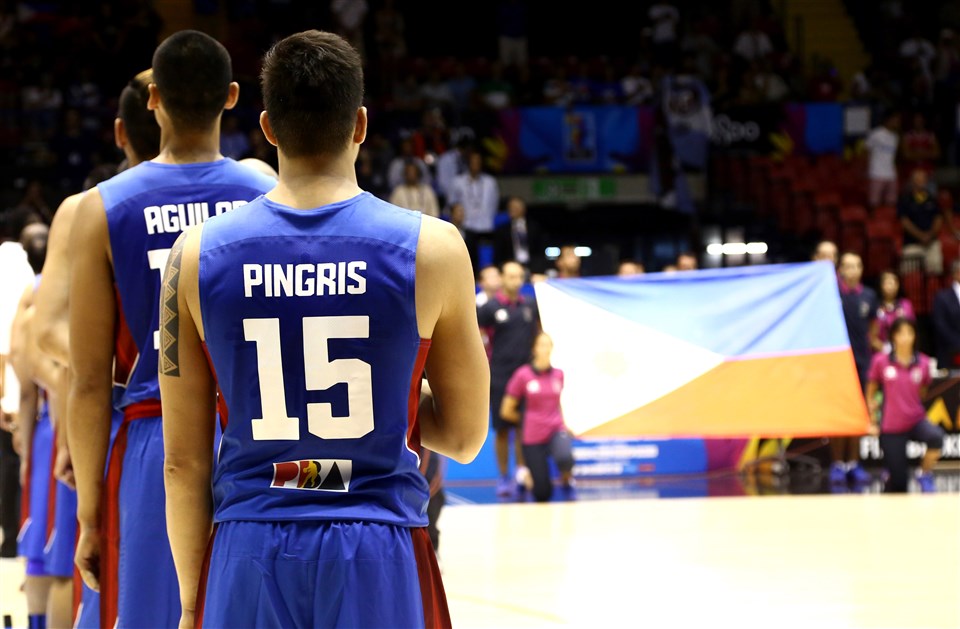
After missing out on the last eight FIBA Basketball World Cup events, the Philippines finally made a return to the world stage in the FIBA Basketball World Cup 2014. Known as Gilas Pilipinas, the national team was able to get back to the grandest stage of basketball by finishing second in the 2013 FIBA Asia Cup.
Gilas Pilipinas showed the whole world what Filipino basketball was all about. In the group stage of that tournament, the Philippines pushed their higher-ranked opponents Croatia, Greece, Argentina, and Puerto Rico to the limit in the first four games. They ended the tournament with a monumental win against Senegal, their first win on the world stage in 40 years.
Carlos Loyzaga
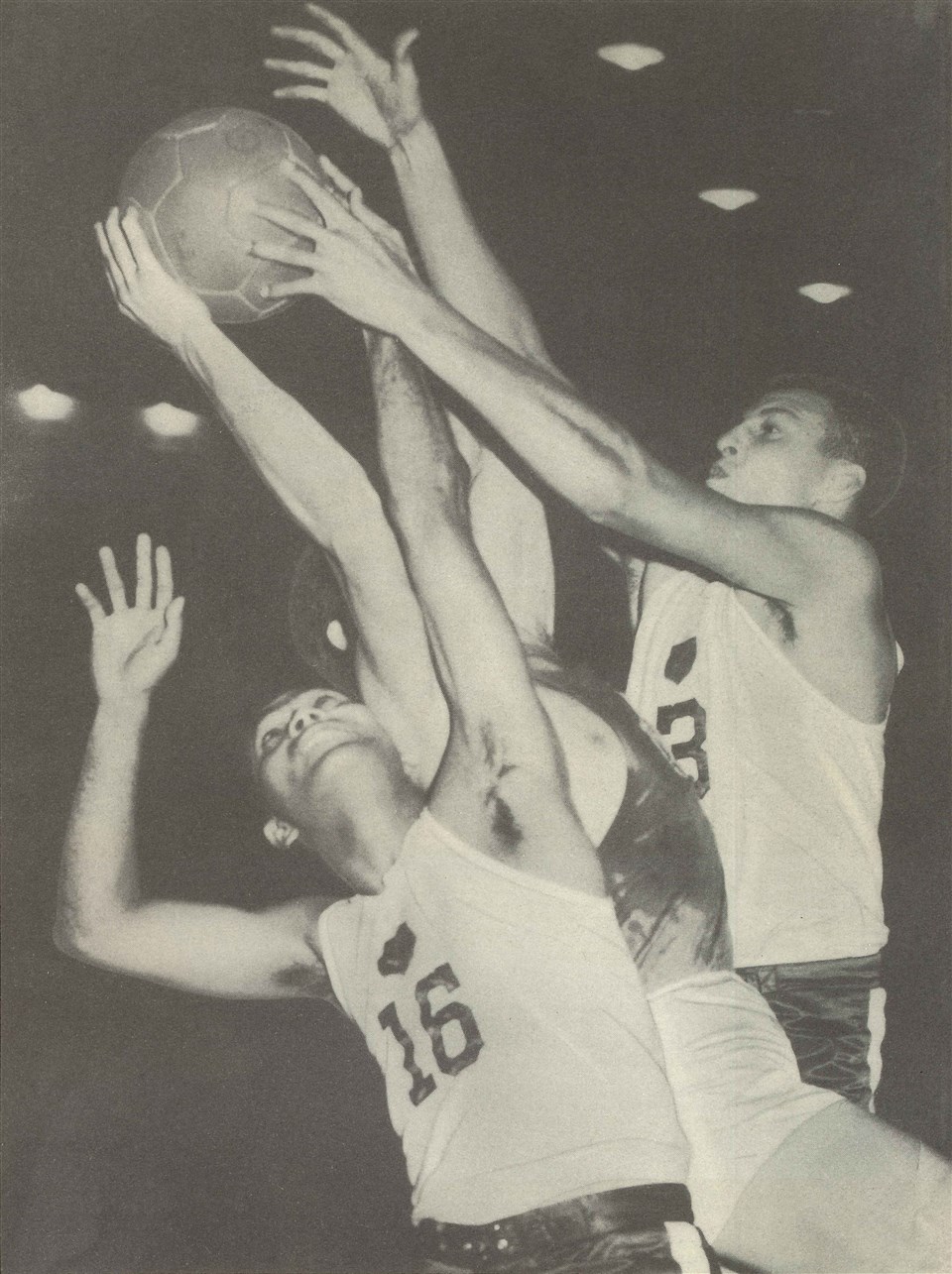
No one has significantly impacted Philippine basketball more than Carlos "Caloy" Loyzaga. A two-time Olympian, he placed the country on the world map by leading the national team to multiple gold medals in the Asian Games and FIBA Asia Cups. His most outstanding achievement was spearheading the Philippines to a bronze finish in the 1954 FIBA Basketball World Cup where he was also selected to the All-Star Five of the tournament. Nicknamed "The Big Difference", he is revered for helping the Philippines become a dominant basketball force in the region.
Robert Jaworski, Sr
If there was one player who fully captures the essence and passion of Philippine basketball, it’s Robert "Sonny" Jaworksi. The fiery court general embodied the “Never Say Die” mantra of the teams he played on throughout his 23 seasons in the Philippine Basketball Association. Known as “The Big J” and “The Living Legend”, he was the face of Philippine basketball for nearly three decades both as a charismatic player and playing coach. Not only was he one of the best to ever play, but he is also one of the most popular Filipino players of all time.
June Mar Fajardo
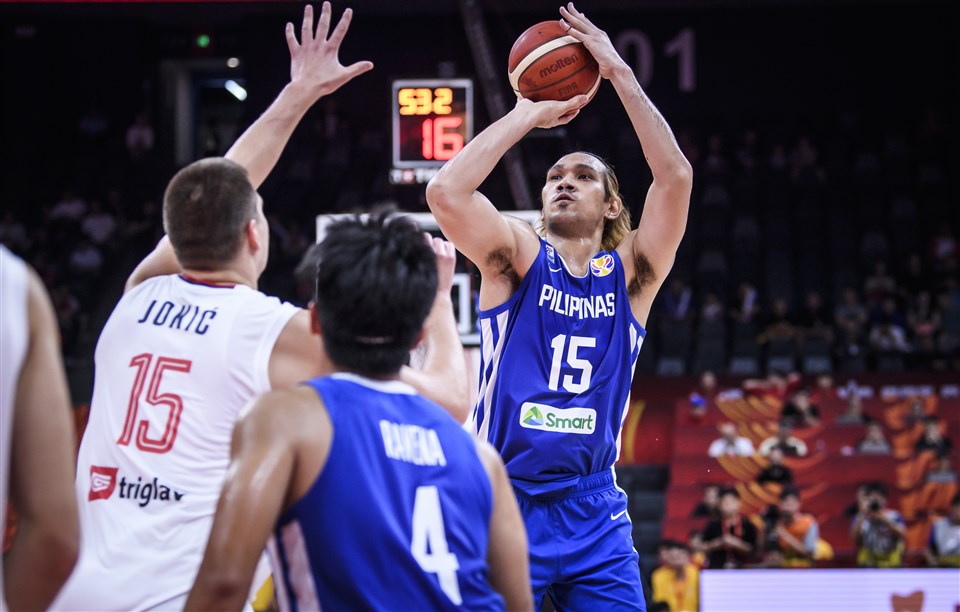
June Mar Fajardo symbolizes where Philippine basketball is today. The big-bodied center has dominated the PBA for the last decade and became the first player in the league to win six straight Most Valuable Player awards. He was the centerpiece in nine PBA championships and was named Finals MVP four times. Known as "The Kraken", he has become a mainstay in the national team program. He was part of the Gilas Pilipinas squad that qualified for the 2014 FIBA Basketball World Cup in Spain and the 2019 edition in China.
FIBA Partners

Global Suppliers

Event Sponsors

NIKE FIBA World Ranking
- Dominican Republic
- Philippines
- Puerto Rico
- South Sudan
- New Zealand
- Côte d'Ivoire
Watch Live Basketball

- Terms and conditions
- Cookie Policy
- Cookie Settings

Copyright FIBA All rights reserved. No portion of FIBA.basketball may be duplicated, redistributed or manipulated in any form. By accessing FIBA.basketball pages, you agree to abide by FIBA.basketball terms and conditions .
Page at www.fiba.basketball indicated:
Your suplied Email address ([email protected]) does not seem to be correct
Subscribe to the FIBA Daily:
Unsubscribe from the fiba daily:.
Why the Philippines is Obsessed With Basketball

Basketball is everywhere you look in the Philippines: in tiny fishing villages on the islands of Palawan, on gritty street corners in Manila and Cebu, and on television screens from north to south of the archipelago. Where does this passion for the game of hoops come from? Find out as Culture Trip explores the Philippines’ continuing love affair with basketball .
There’s no doubt about the origins of basketball on the Philippine islands. In 1898, American colonizers introduced the sport as part of revisions they made to the official Philippine school system. Although the Americans also attempted to teach baseball, basketball was the sport that took off, and just 15 years later, the Philippines won gold in the 1913 Far Eastern Games.

The Filipinos’ love for basketball may begin at any time, but it is definitely nurtured by the school system, from primary school up to the collegiate level. In 1938, the University Athletic Association of the Philippines (UAAP) was born. This varsity league is still alive and kicking, and many non-players get roped into the passion and excitement of the game during their university years, as long-standing rivalries come to a head and thousands of students troop to the Araneta Coliseum for the heated finals of each UAAP season.
Many visitors to the Philippines wonder about the roots of the Filipinos’ adoration for the sport, considering that Filipinos are not known for their height (a major asset in basketball). Experts point to the basketball’s accessibility, its entertainment factor, and its fast pace as the main reasons why it has merged so well with Filipino culture.
Since it requires little space, no maintenance, no expensive gear, and no required number of players for a social game, basketball carries well across the poverty-stricken Philippines, where it staves off boredom for countless Filipino teenagers. Besides being easy to learn, the sport also fits well in the Philippines because of its strategic and dynamic nature, making the game rewarding for both players and spectators. Filipinos, who love being entertained, enjoy being kept on the edge of their seats by the game’s unpredictable twists.
Beyond this, the game has become a source of national pride for the country. The Philippines won bronze at the 1960 FIBA World Championship, the highest finish to date of any Asian nation in the games (now the FIBA World Cup.) By 1975, the Philippines had established the Philippine Basketball Association , the first pro basketball league in the world outside of the United States. Despite their small stature, Filipinos are surprisingly adept at the sport, and the country holds countless gold medals from regional competitions.
The country’s love for the game continues. The National Geographic documentary Pinoy Hoops takes a deep look into how the sport is played in the Philippines. The government has been known to postpone elections rather than have them clash with dates of the NBA Finals. Nike reports that the Philippines is its third largest basketball market after the USA and China. It’s safe to say that nothing unites Filipinos of every social class on 7,107 islands more than what happens on the basketball court.

KEEN TO EXPLORE THE WORLD?
Connect with like-minded people on our premium trips curated by local insiders and with care for the world
Since you are here, we would like to share our vision for the future of travel - and the direction Culture Trip is moving in.
Culture Trip launched in 2011 with a simple yet passionate mission: to inspire people to go beyond their boundaries and experience what makes a place, its people and its culture special and meaningful — and this is still in our DNA today. We are proud that, for more than a decade, millions like you have trusted our award-winning recommendations by people who deeply understand what makes certain places and communities so special.
Increasingly we believe the world needs more meaningful, real-life connections between curious travellers keen to explore the world in a more responsible way. That is why we have intensively curated a collection of premium small-group trips as an invitation to meet and connect with new, like-minded people for once-in-a-lifetime experiences in three categories: Culture Trips, Rail Trips and Private Trips. Our Trips are suitable for both solo travelers, couples and friends who want to explore the world together.
Culture Trips are deeply immersive 5 to 16 days itineraries, that combine authentic local experiences, exciting activities and 4-5* accommodation to look forward to at the end of each day. Our Rail Trips are our most planet-friendly itineraries that invite you to take the scenic route, relax whilst getting under the skin of a destination. Our Private Trips are fully tailored itineraries, curated by our Travel Experts specifically for you, your friends or your family.
We know that many of you worry about the environmental impact of travel and are looking for ways of expanding horizons in ways that do minimal harm - and may even bring benefits. We are committed to go as far as possible in curating our trips with care for the planet. That is why all of our trips are flightless in destination, fully carbon offset - and we have ambitious plans to be net zero in the very near future.


Places to Stay
The most budget-friendly hotels in tagaytay.

The Best Pet-Friendly Hotels in Tagaytay, the Philippines

Where to Stay in Tagaytay, the Philippines, for a Local Experience

Hip Holiday Apartments in the Philippines You'll Want to Call Home

The Best Hotels to Book in the Philippines for Every Traveller

The Best Hotels to Book In Tagaytay for Every Traveller

See & Do
Exhilarating ways to experience the great outdoors in the philippines.

What Are the Best Resorts to Book in the Philippines?

The Best Resorts in Palawan, the Philippines

Bed & Breakfasts in the Philippines

The Best Hotels to Book in Pasay, the Philippines

The Best Hotels to Book in Palawan, the Philippines
Winter sale offers on our trips, incredible savings.

- Post ID: 1167886
- Sponsored? No
- View Payload

The IAFOR Research Archive
Philippine Basketball, Economy and Politics: How the COVID-19 Pandemic Hit the Filipinos’ Most Beloved Sport
James Alexander Gordon on 12th August 2020
This paper explores how the prolonged quarantine measures in the Philippines affected the economics and politics of basketball, arguably the most beloved sport among Filipinos, given its sub-cultural underpinnings and significance as a venue of public interaction. It presents the sport and its foremost structure (basketball court) as an "economic hub" in limbo because of strict lockdown measures implemented by government under the Enhanced Community Quarantine (ECQ) to ensure the public’s safety amid the rise of COVID-19 cases in the Philippines, specifically from April to July. This led to limited people movement, and consequently empty playing courts devoid of any economic activity. The void left by the "economic hub" discourse is now greatly filled by the politics of "public utility" hinged on the utilization of basketball courts as quarantine sites and holding areas for lockdown violators, among others. But in late September, the country’s basketball stakeholders have moved to restart the sport by staging a bubble tournament in Pampanga province, north of Manila, and later joining the second window of the 2021 FIBA Asia Cup qualifiers in Manama, Bahrain as its pitch for a return to “basketball normalcy” in the country. The descriptive-analytical method of narration supported by historical sources and online news updates were employed for this paper to contextualize the discussion and show how Philippine basketball as a subaltern topic can transcend the realm of the “apolitical” and become an outpost of relevant scholarship at the time of the pandemic.
This paper is part of the KAMC2020 Conference Proceedings ( View ) Full Paper View / Download the full paper in a new tab/window